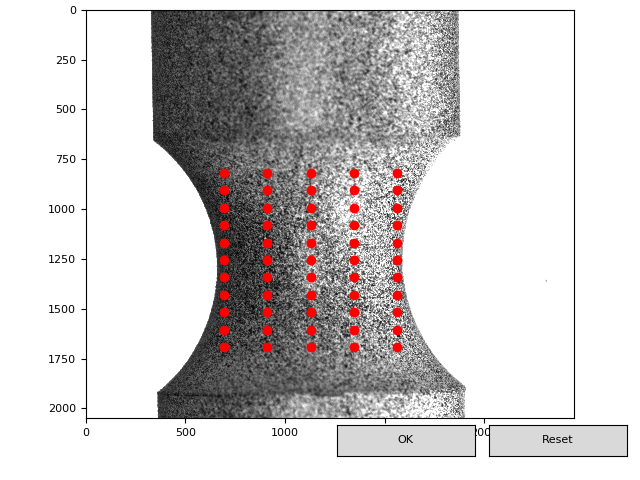Mesher¶
The mesher package contains everything you need for generation of simplistic structured meshes. Let us first import the tools:
import muDIC as dic
Generating a mesh from an image stack¶
In order to generate a mesh, you first need to instanciate a mesher object:
mesher = dic.Mesher()
Mesher can take a set of settings such as polynomial order and pre-defined knot vectors. If none are given, it uses the default fisrt order polynomials.
Now, let us make a mesh on the image_stack object we have made earlier:
mesh = mesher.mesh(image_stack)
A GUI will now pop up, looking something like this:

You can now drag a rectangle over the region you want to cover by the mesh. To manipulate the mesh, you can use:
- A,D: add or remove element in the horizontal direction
- W,X: add or remove element in the vertical direction
- arrow keys: move the mesh one pixel in the direction of the arrow
If everything is working properly, a small matplotlib-GUI will pop up. If you dont want to use a GUI, you can set GUI=False and give the numeber of control points and the coordinates of the corners manually.
The mesh object is now ready for use.
Manipulating a mesh¶
The mesh-object has a set of methods for manipulating the mesh after it has been created. We can use them to translate the mesh five pixels in the X-direction:
mesh.move((5,0))
or scale the mesh by a factor of 1.2:
mesh.scale(1.2)